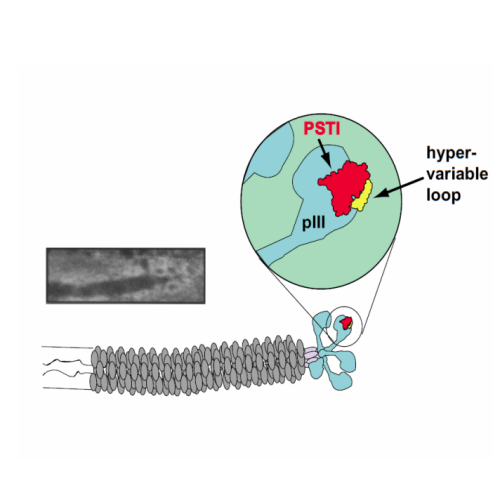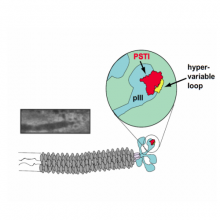
pSKAN Phagemid Display System Libraries and Strain WK6ΛmutS
The pSKAN Phagemid Display System can be used to select and produce novel proteins that bind to target molecules of interest.
pSKAN is a combinatorial phagemid library expressed in E. coli. The phage coat protein pIII is fused to human pancreatic secretory trypsin inhibitor protein (hPSTI), which contains a short stretch of hypervariable amino acids. They can be screened in a "panning assay" for specific binding to a target molecule of interest. Variants with optimal affinity are selected and propagated in E. coli.
The pSKAN Phagemid Display System is a fast and easy-to-handle alternative to antibodies or immunoglobulin domain presenting phagemids. Since the pSKAN phagemid displays a small and constrained hypervariable amino acid loop, more than 3 x 107 variants can be tested for the specific binding to the target molecule. The variants with the optimal affinity can be selected and propagated without needing to use animals or tissue cultures. The sequence of the binding domain can be determined easily by DNA sequencing. In comparison to antibodies, the pSKAN System can target very small epitopes. The target molecules are received in just three weeks.
This system includes three ready-to-use libraries, HyA, HyB and HyC, and the E.coli host strain WK6ΛmutS. The libraries differ in the extent of their hypervariable loop and were made by using phagemid pSKAN8. If you are interested in preparing your own library, pSKAN8 can be purchased separately or with pSKAN.
To determine the sequence of a selected hypervariable loop, two sequencing primers are available: Sequencing Primer 1255 and Sequencing Primer 2897. Antibodies against pIII and hPSTI can be obtained for western blots. For the production of soluble hPSTI protein with the desired binding properties, the vector pMAMPF3-PSTI4 can be used.
- Can select very high-affinity binders
- Low dissociation due to low flexibility and rigid structure of the hypervariable loop
- Easy and reliable modelling because of the highly constrained epitope
- Highly stable libraries due to the strong repression of the λ-promoter in E. coli WK6λmutS
- Can produce soluble proteins
- Monovalent display gives high selectivity
- Process can be completed in three weeks
- Does not require use of animals or tissue cultures
- Development of new affinity matrices for a protein of choice
- Screening for novel protease inhibitors with potential clinical applications
- Tools for the detection of proteins, such as in food technology
- High-throughput screening of protein-protein interactions
- Selection of proteins with specific binding properties (high affinity binders)
- Ligand screening
- Development of pharmaceuticals and diagnostics
- Detection of allergens
- Of special interest: 3-D structure-based protein design
- HyA pSKAN Library in E. coli WK6ΛmutS, 1ml
- HyB pSKAN Library in E. coli WK6ΛmutS, 1ml
- HyC pSKAN Library in E. coli WK6ΛmutS, 1ml
- Host strain E. coli WK6ΛmutS, 1ml

